Best tall flowers: 12 varieties to add height and drama
These beautiful tall flowers are perfect for screening lackluster views, providing privacy, and adding visual impact to the garden
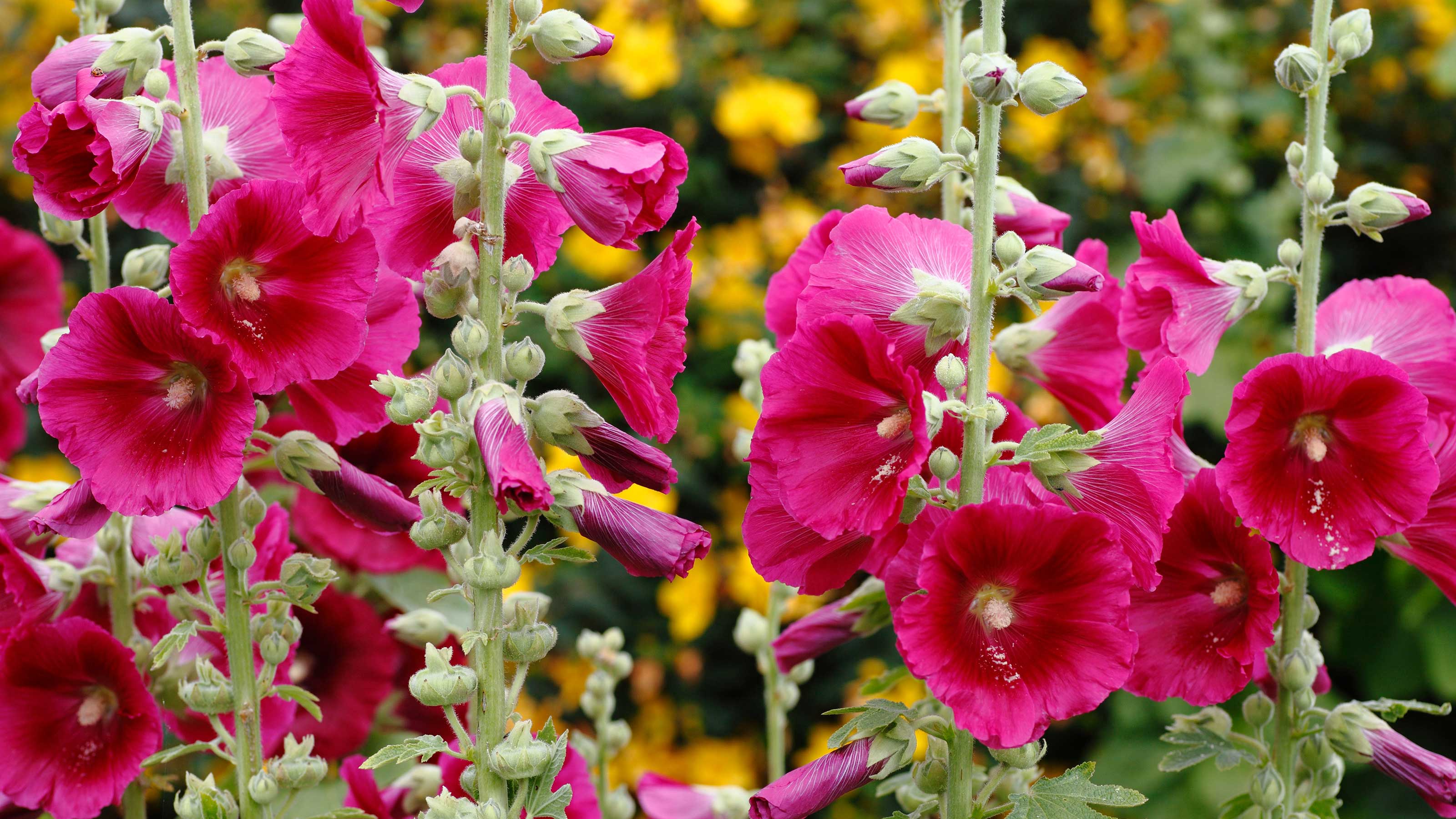

Tall flowers are ideal for when we want height in our gardens without the permanence of trees or shrubs – and there are many beautiful varieties to choose from.
A tall perennial may be just what’s needed as a centerpiece in an ‘island’ flower bed, or to bring vibrant color against a house wall. Or, perhaps you want to give your garden a little more privacy from the neighbors, in which case they can be planted to act as a screen. They can be used for brightening up patios, too – growing tall flowers in large pots is an excellent way to bring a small area to life.
Whatever your desire, there are plenty of towering perennials out there with just the right dramatic vibes for you.
Our favorite tall flowers for backyard planting
Plant these lofty perennials in your yard and they will last for many years, after which most can be lifted, divided and replanted. And even when they aren’t blooming, their leaves can be lush and lavish, and can effectively turn a grungy area into your favorite part of the garden.
As always, it's best to check the flowers you choose aren't regarded as invasive plants in your area, before you add them to your backyard.
1. Giant viper’s bugloss
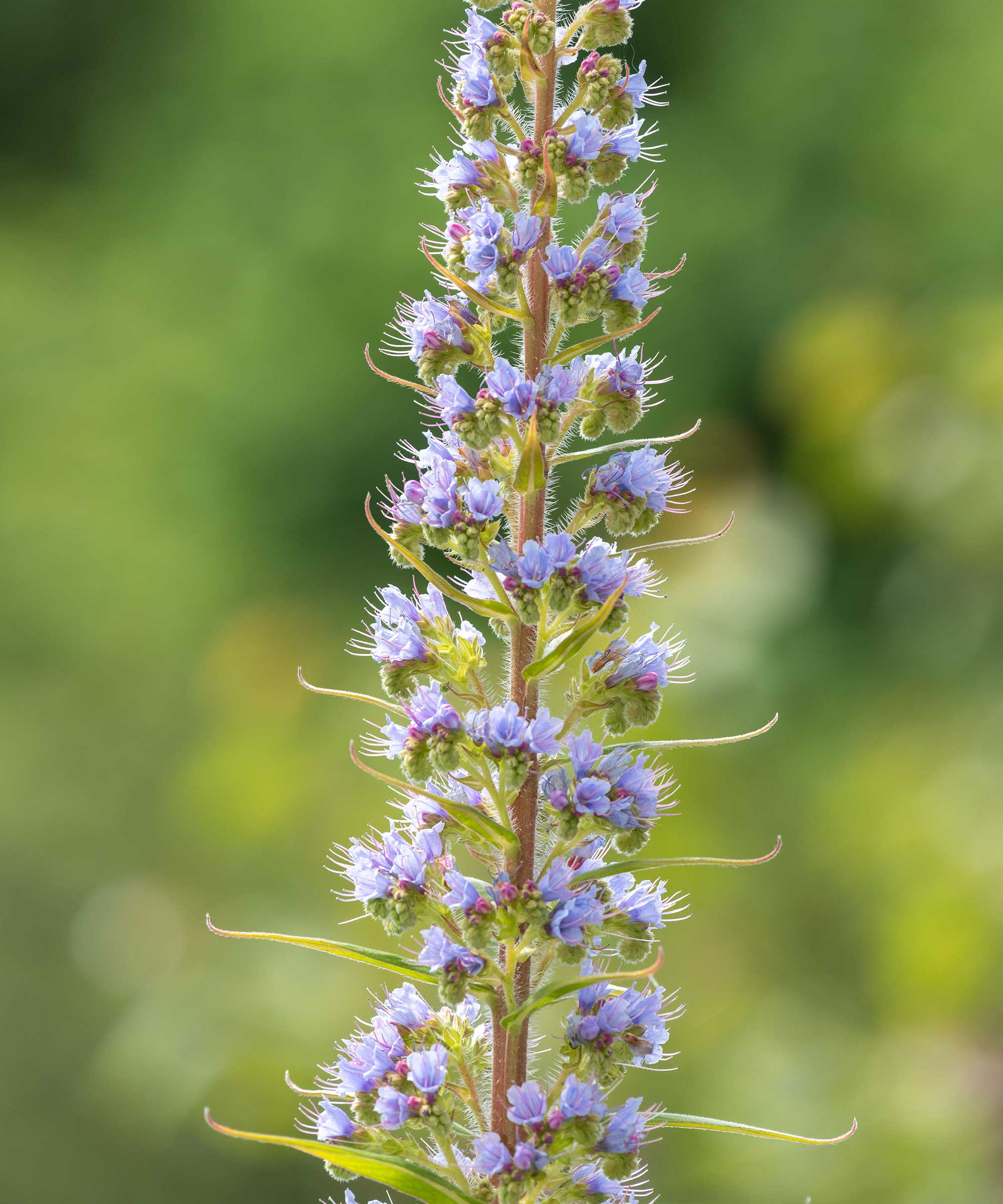
- Height: 12ft (3.7m)
- Hardiness: USDA 8-10 (UK H3)
- Where to plant: Full sun
This is a short-lived perennial that is a true giant.
Over winter, there is a lowly rosette of leaves – which itself can get sizeable. But then, you’ll see the start of a flower spike. It’ll get taller, and taller, and from late spring, for many weeks, there’ll be blue, funnel-shaped flowers.
A great plant for bees.
2. Giant fennel
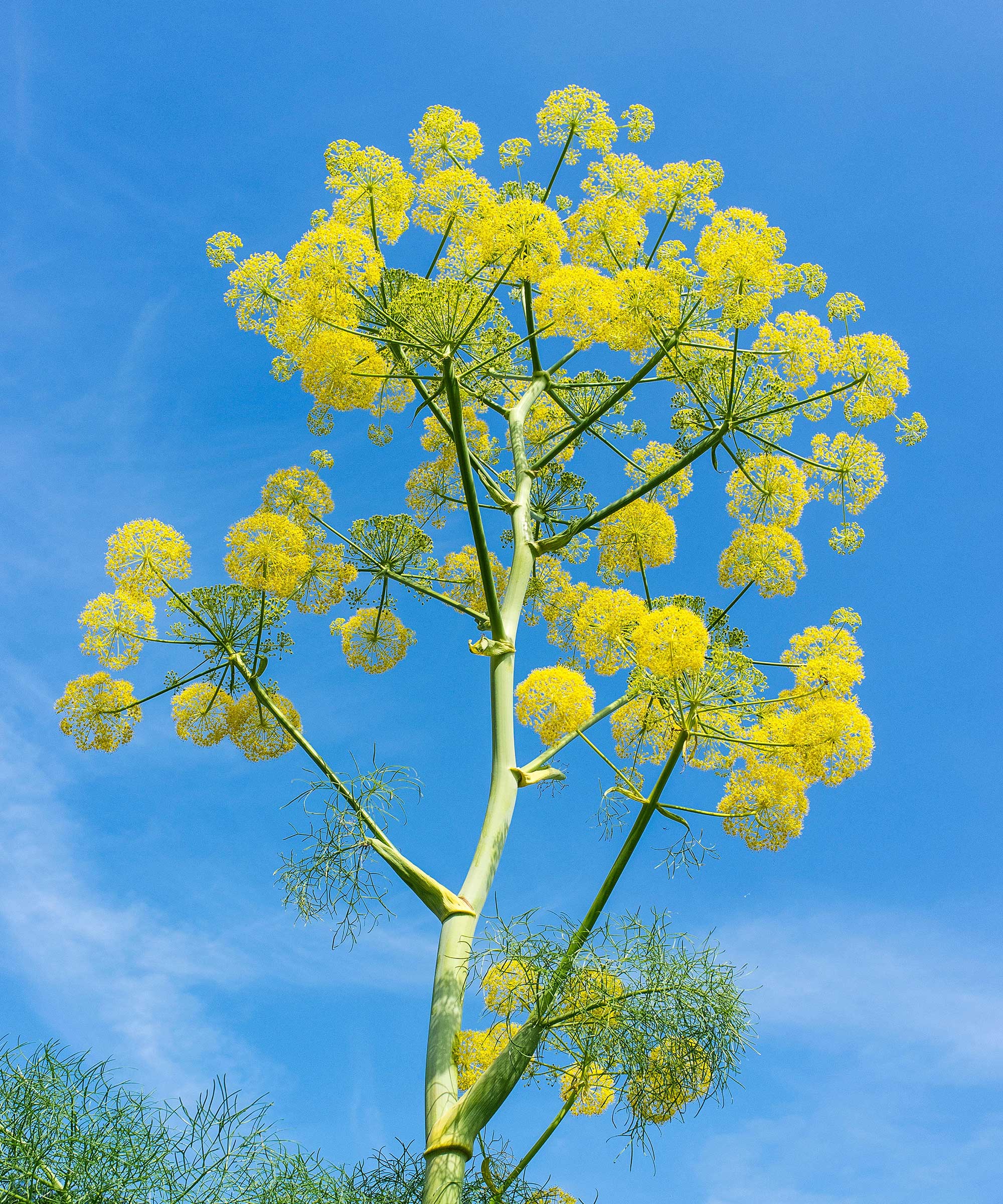
- Height: Up to 13ft (4m)
- Hardiness: USDA 7-10 (UK H3)
- Where to plant: Full sun
This plant forms an attractive mound of dark green, finely-cut leaves. Then, in early summer, a mature plant will grow a sturdy system of branched stems, coming from a flower stalk as thick as a broomstick.
These branches carrying giant flowerheads are made up of multiple umbels of tiny yellow flowers. A real spectacle.
3. Cardoon
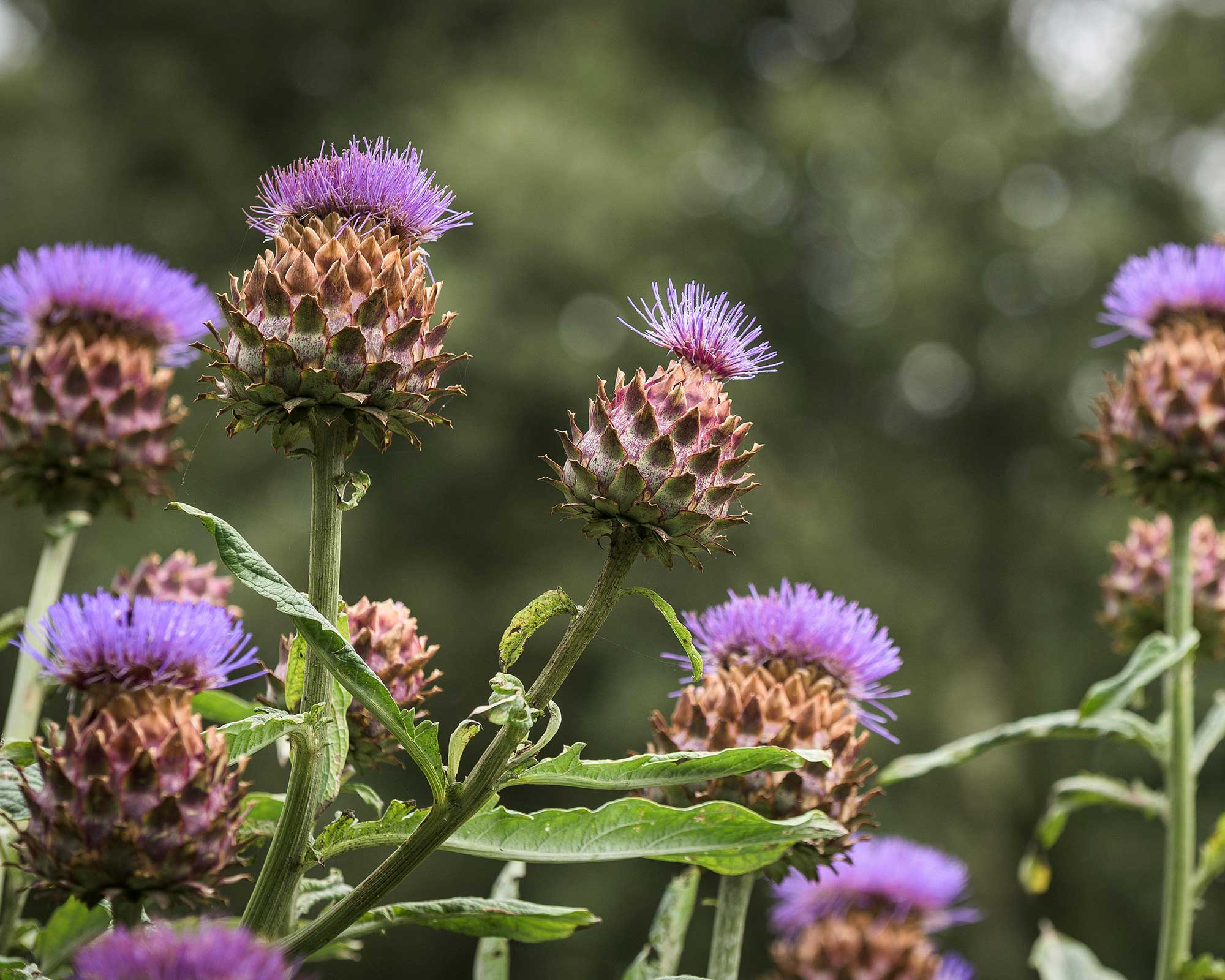
- Height: Up to 10ft (3m)
- Hardiness: USDA 7-9 (UK H5)
- Where to plant: Full sun
Robust is the word for these tall flowers.
A clump of silvery-gray, spiny leaves, often more than 36in (90cm) in length, are accompanied by fat, thistle-like purple flowers in late summer and autumn. The flowers attract masses of bees.
The dead flowerheads can be left on the plants to provide additional interest in the winter garden. An old Victorian favorite.
4. Common rose mallow
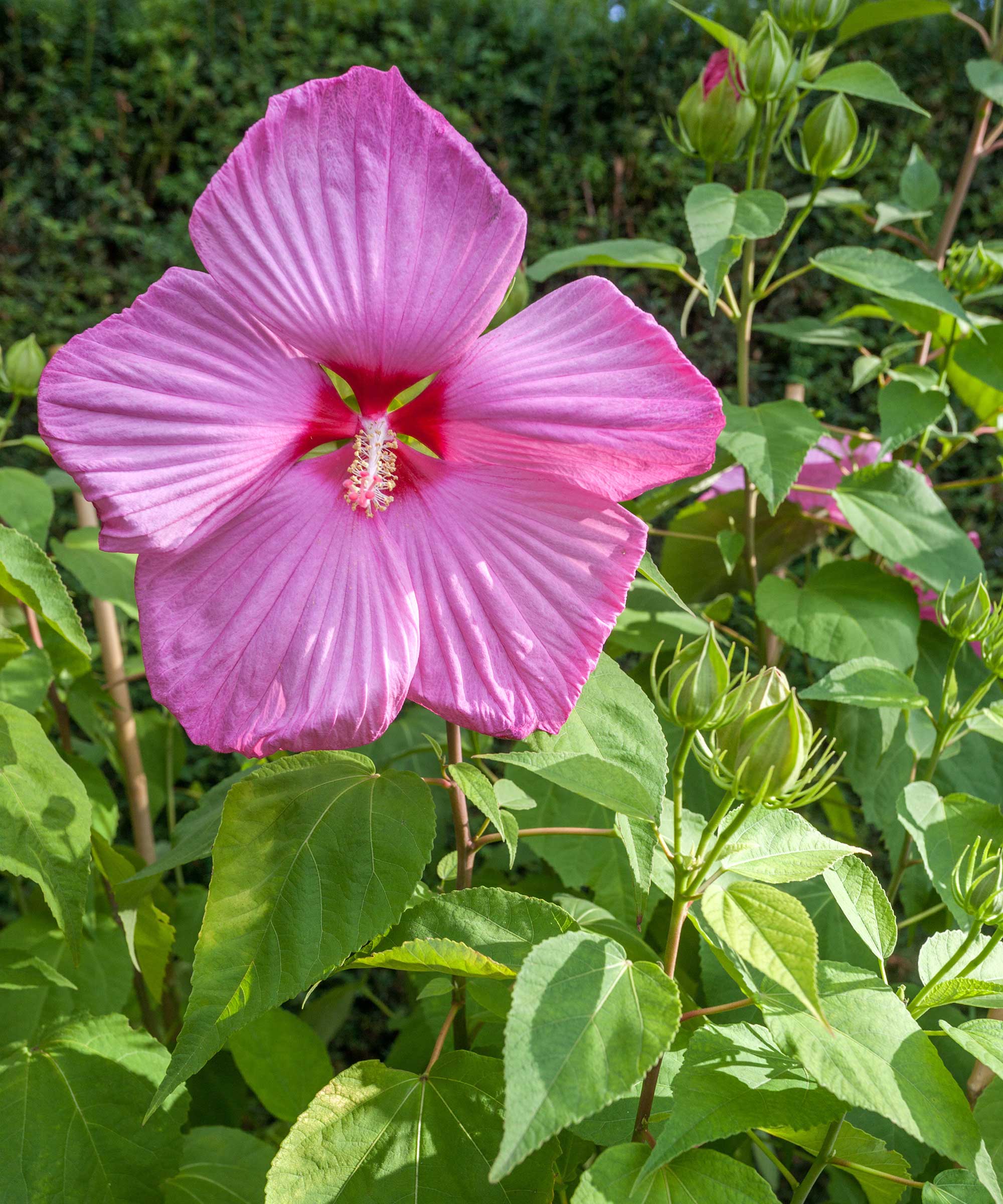
- Height: Up to 8ft (2.5m)
- Hardiness: USDA 5-9 (UK H4)
- Where to plant: Full sun
In mid to late summer, the flowers of this woody-based perennial can be 10-12in (25-30cm) across. Depending on the cultivar, they can be pink, salmon, crimson-red or white, and similar shades.
Plants in the ground will be hardy, but those growing in containers should be moved in winter to protect them from frost.
5. Plume poppy
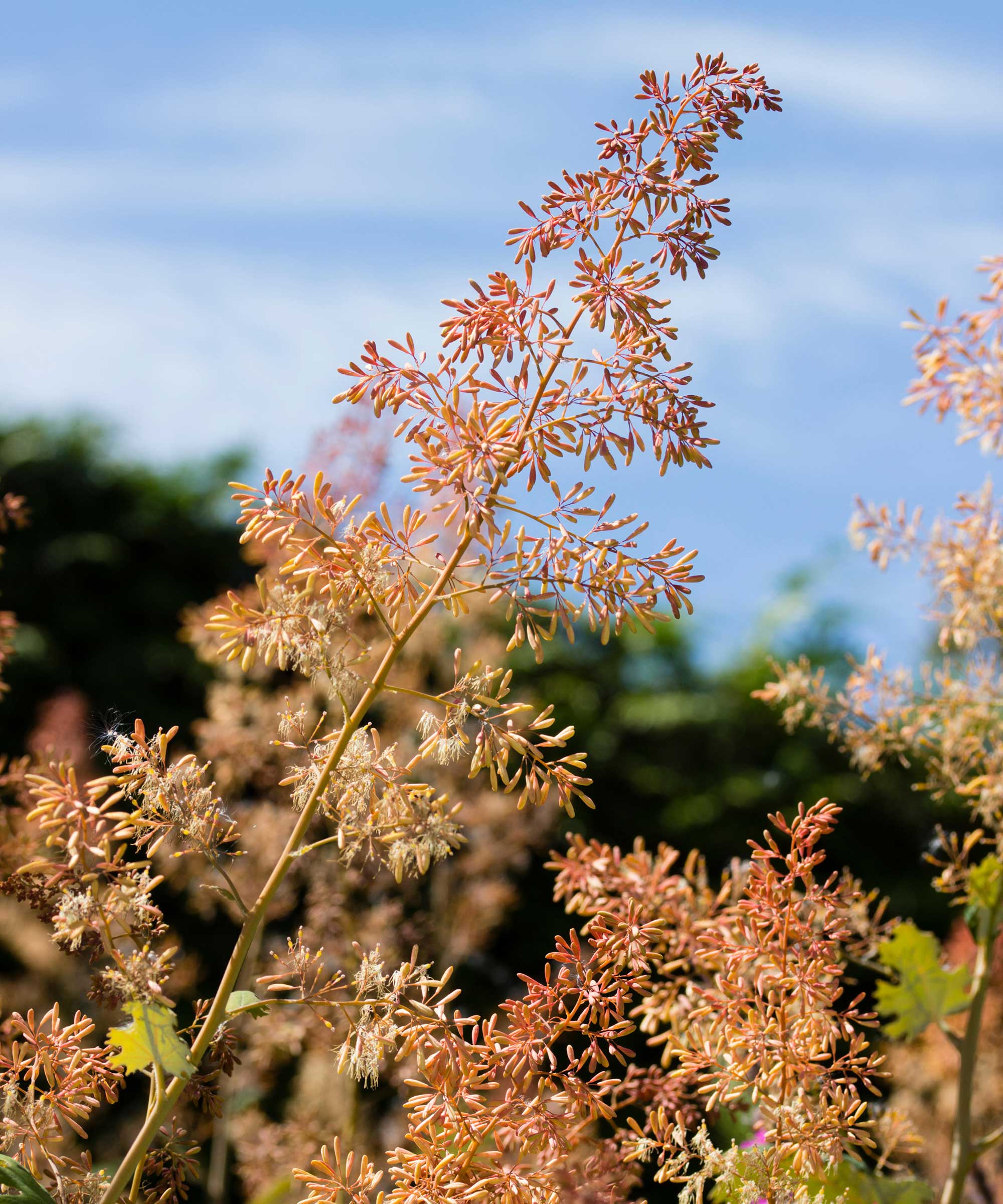
- Height: Up to 8ft (2.5m)
- Hardiness: USDA 3-10 (UK H6)
- Where to plant: Full sun or part shade
This vigorous, hardy perennial is mainly grown for its gorgeous, bold, gray-green leaves. They stand out all the more after rain, when they sparkle with moisture.
In mid-summer, the plant produces huge flowerheads, comprising hundreds of tiny buff-colored blooms, held above the foliage.
6. Queen of the prairie
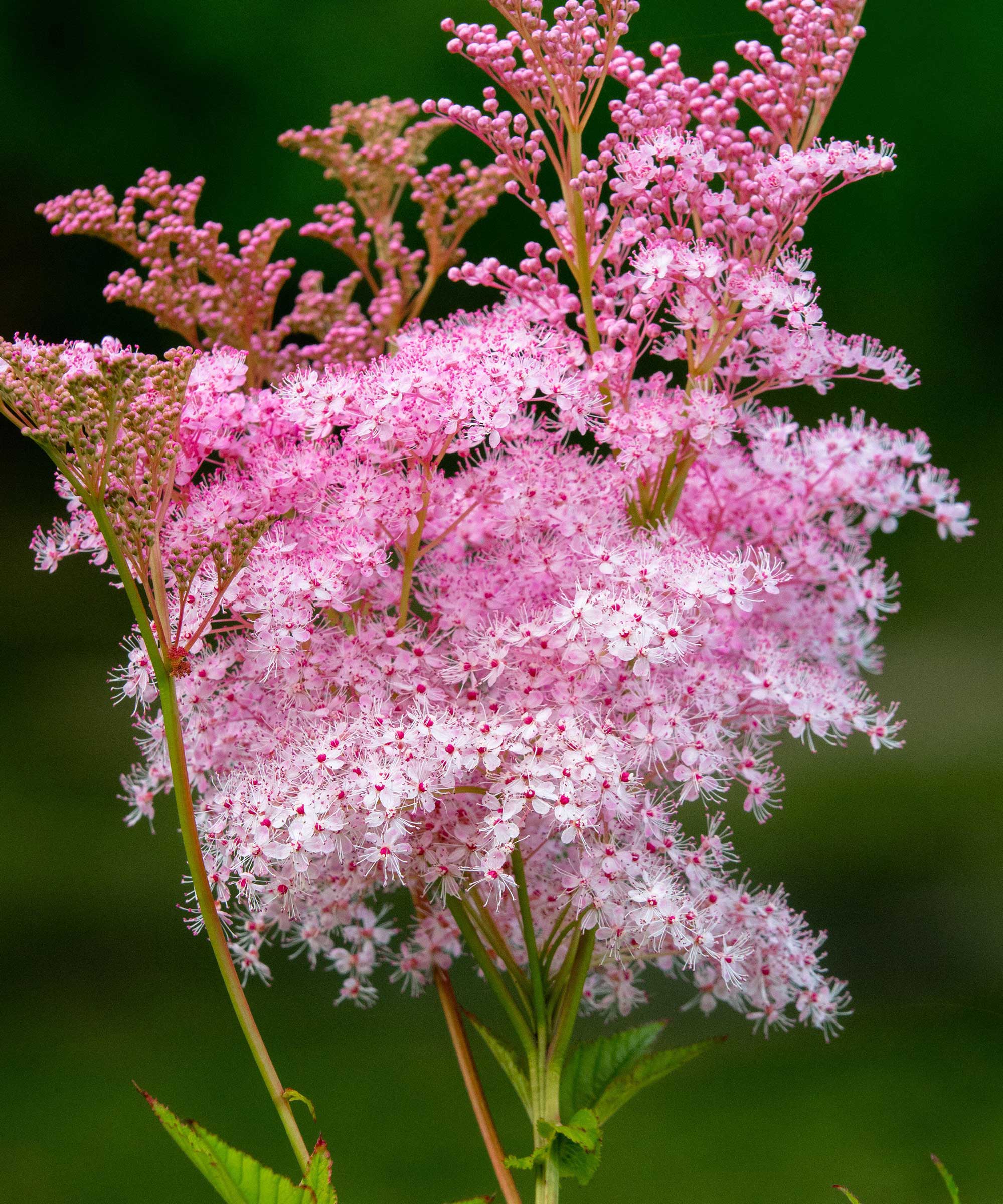
- Height: 6-8ft (1.2-2.4m)
- Hardiness: USDA 3-8 (UK H5)
- Where to plant: Full sun or part shade
Queen of the prairie is a tall, upright perennial with attractive, branching, red stems.
In summer it produces tight flower clusters of deep peach-pink flowers. Up close, each tiny flower is extremely pretty with long, protruding stamens. En masse, they become fluffy clouds of rosy candyfloss.
‘Venusta’, pictured, is a cultivar with light pink flowers that's perfect for romantic cottage garden schemes.
7. Hollyhock
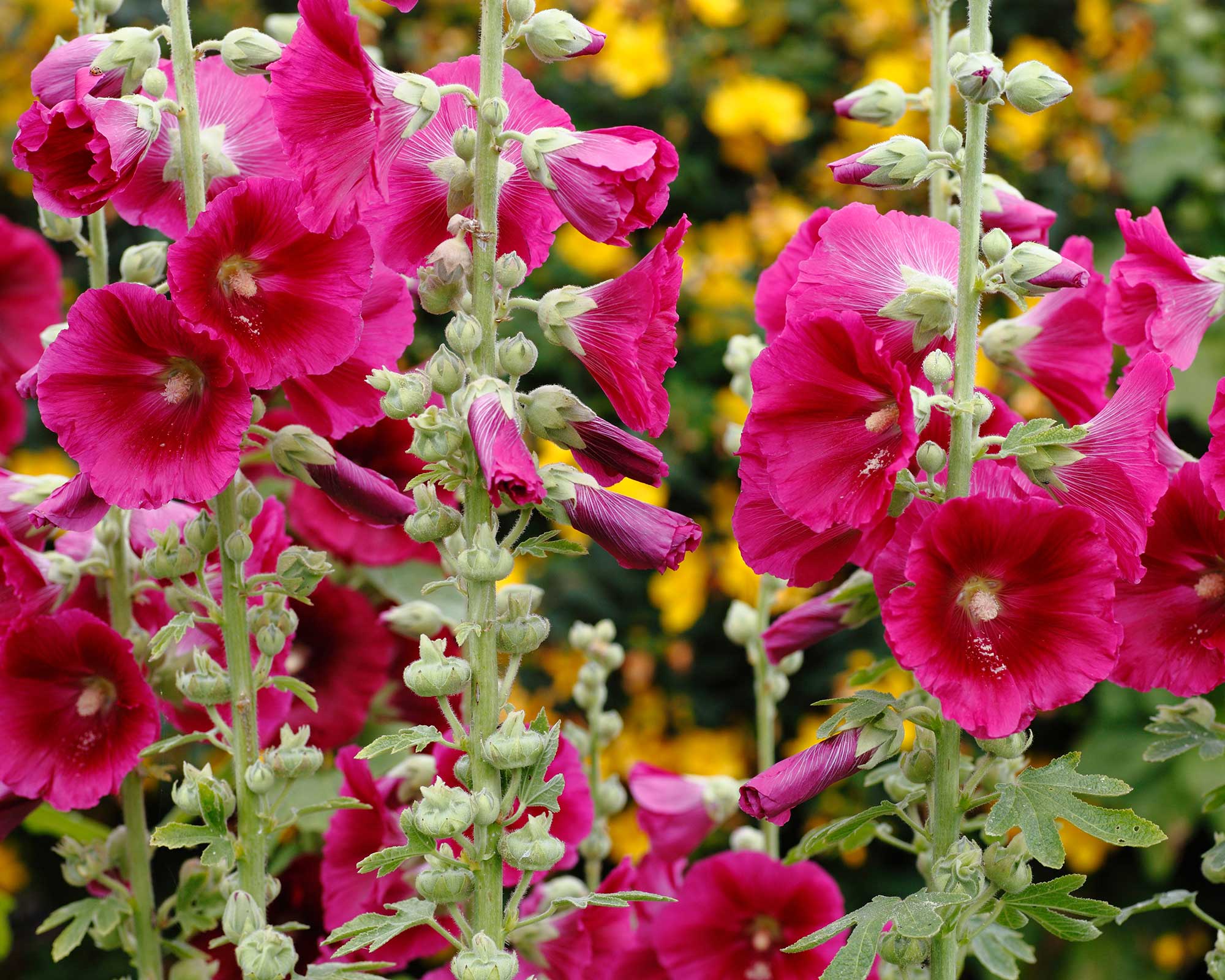
- Height: 5-8ft (1.5-2.5m)
- Hardiness: USDA 3-10 (UK H5)
- Where to plant: Full sun or part shade
Many typical hollyhock varieties last just two years, making them biennials. Others last longer, making them short-lived perennials.
These tall flowers come in a wide variety of bright colors, and they are available in single or double-cup blooms. Although they are cottage garden favorites, they do not look out of place in modern gardens, especially if you opt for ones with crisp white or deep purple blooms.
8. Delphinium elatum
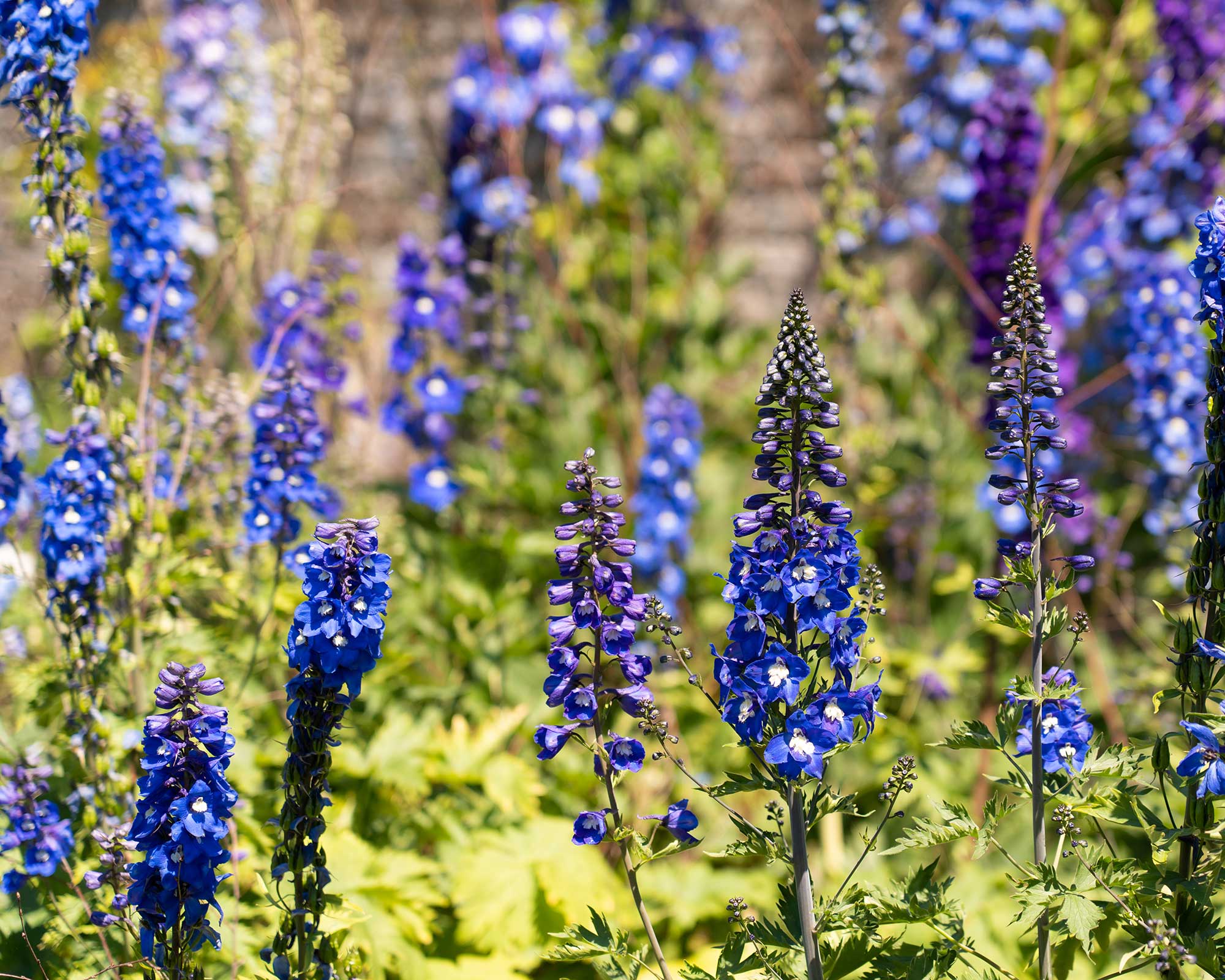
- Height: 5-7ft (1.5-2.4m)
- Hardiness: USDA 3-7 (UK H5)
- Where to plant: Full sun or part shade
Nothing quite beats the drama of delphiniums in the summer garden. Best known for their vivid blue spikes, they also come in mauve, pink, white and even red.
The tallest cultivars are from the Pacific Giants strain, which includes ‘Galahad’ (all white), ‘King Arthur’ (reddish-purple) and ‘Black Knight’ (deep blue-purple).
9. Foxglove ‘Suttons Apricot’
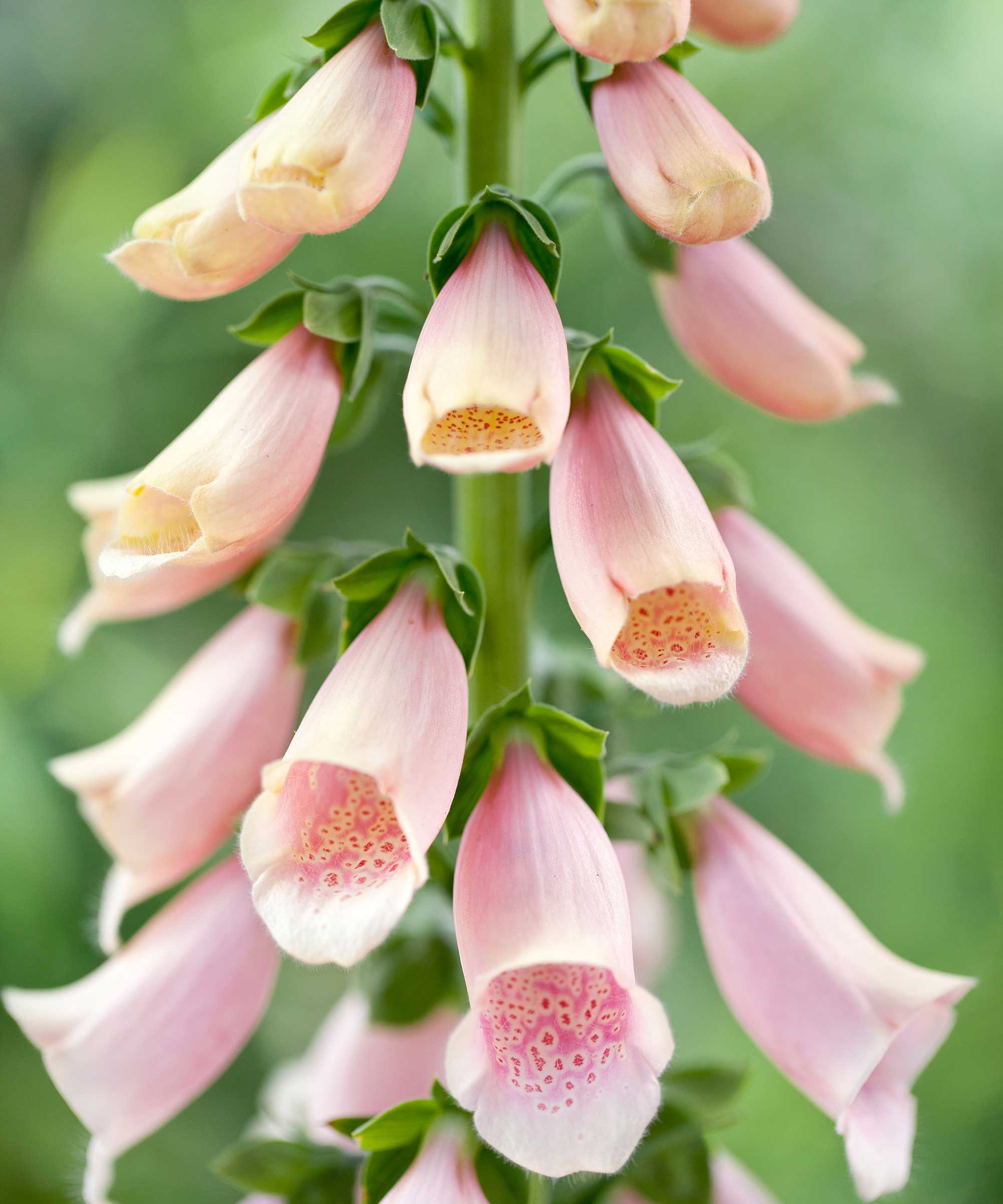
- Height: 5-6ft (1.5-1.8m)
- Hardiness: USDA 4-9 (UK H7)
- Where to plant: Dappled shade
One of the tallest foxglove varieties, it is best from late spring to mid-summer, with soaring spires of tiered, tubular flowers.
They grade from the rosy pinks of the buds, to the pastel shades of the mature blooms – giving an overall appearance of apricot-pink. It’s ideal towards the back of a border.
10. Helianthus ‘Monarch’
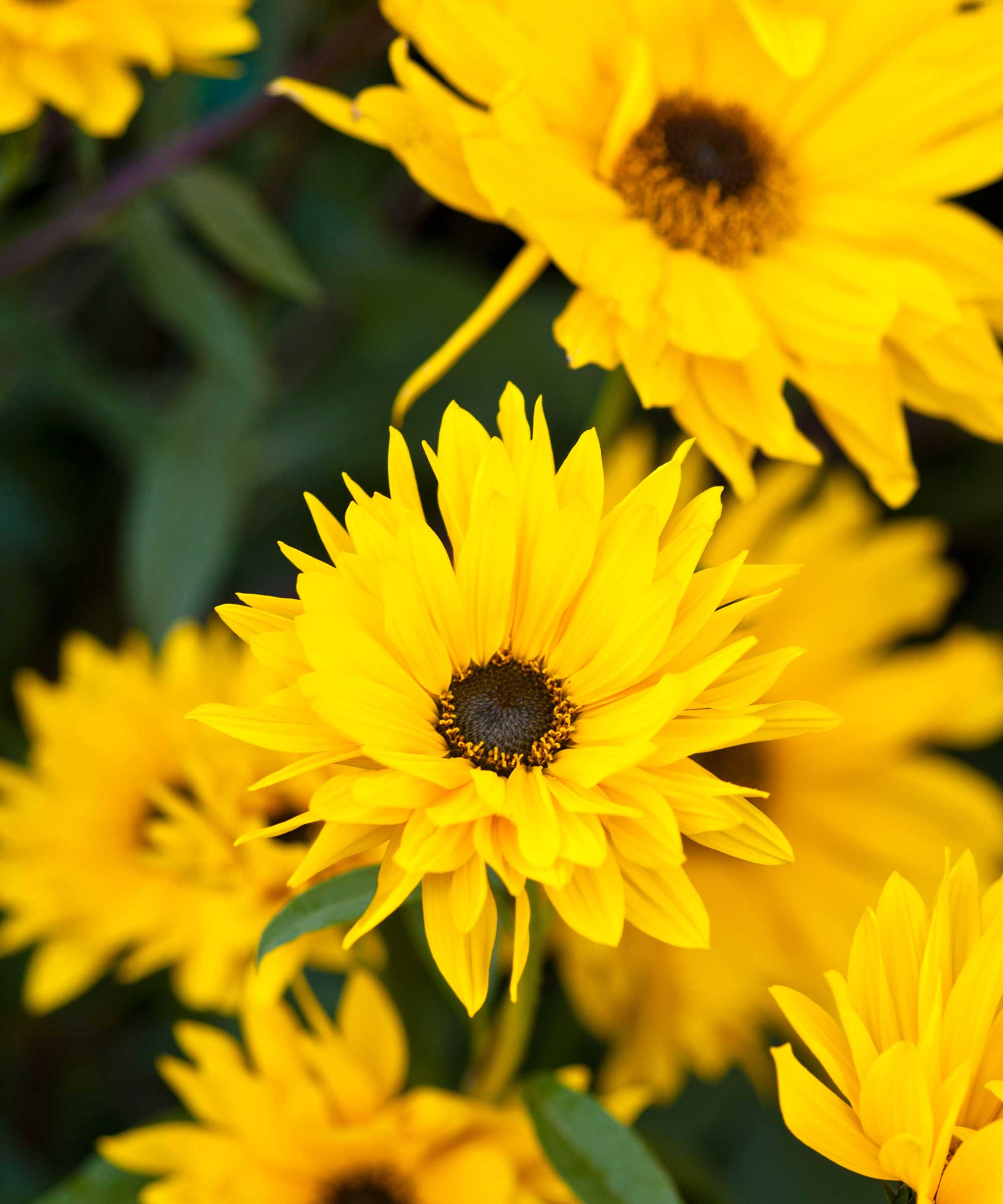
- Height: 4-8ft (1.2-2.5m)
- Hardiness: USDA 7-11 (UK H5)
- Where to plant: Full sun
'Monarch' is a herbaceous perennial sunflower, with large, bright yellow, single to semi-double flowers from late summer to mid-fall.
The petals are long, slender and pointed, radiating from a neatly domed, soft brown center. The upright stems are stiff, and carry longish, mid-green leaves. One for the back of the border.
11. Miscanthus floridulus ‘Giganteus’
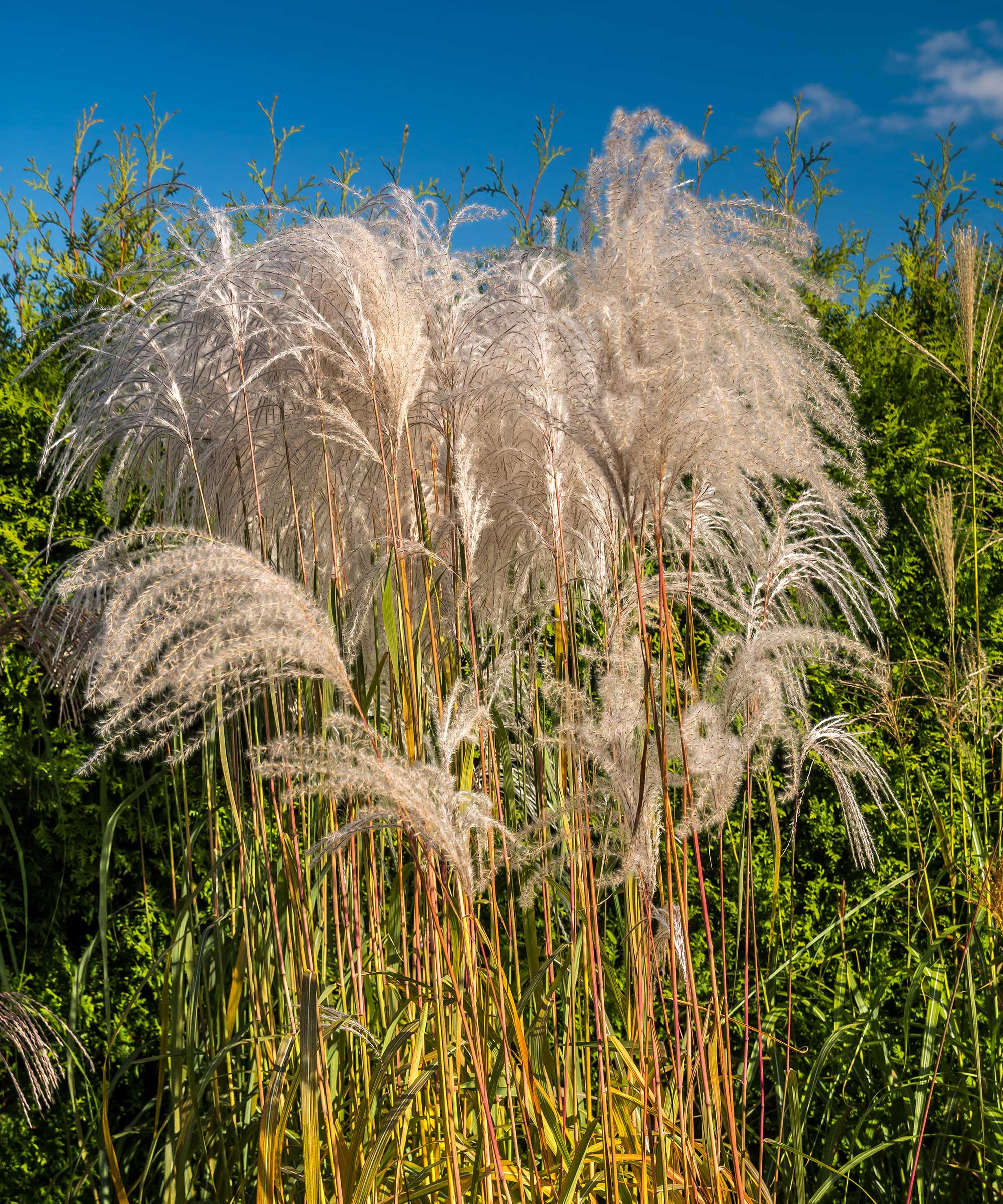
- Height: 10ft (3m)
- Hardiness: USDA 4-9 (UK H6)
- Where to plant: Full sun or part shade
This is a vigorous, clump-forming, deciduous grass, with narrow leaves of dark green with pale, silvery midribs. The leaves turn yellow in autumn, fading to pale brown in winter.
Pale pink feathery flower spikes enjoy particularly long, hot summers, then fade to bleached-silver. They remain on the plant over winter.
12. Panicum virgatum ‘Cloud Nine’
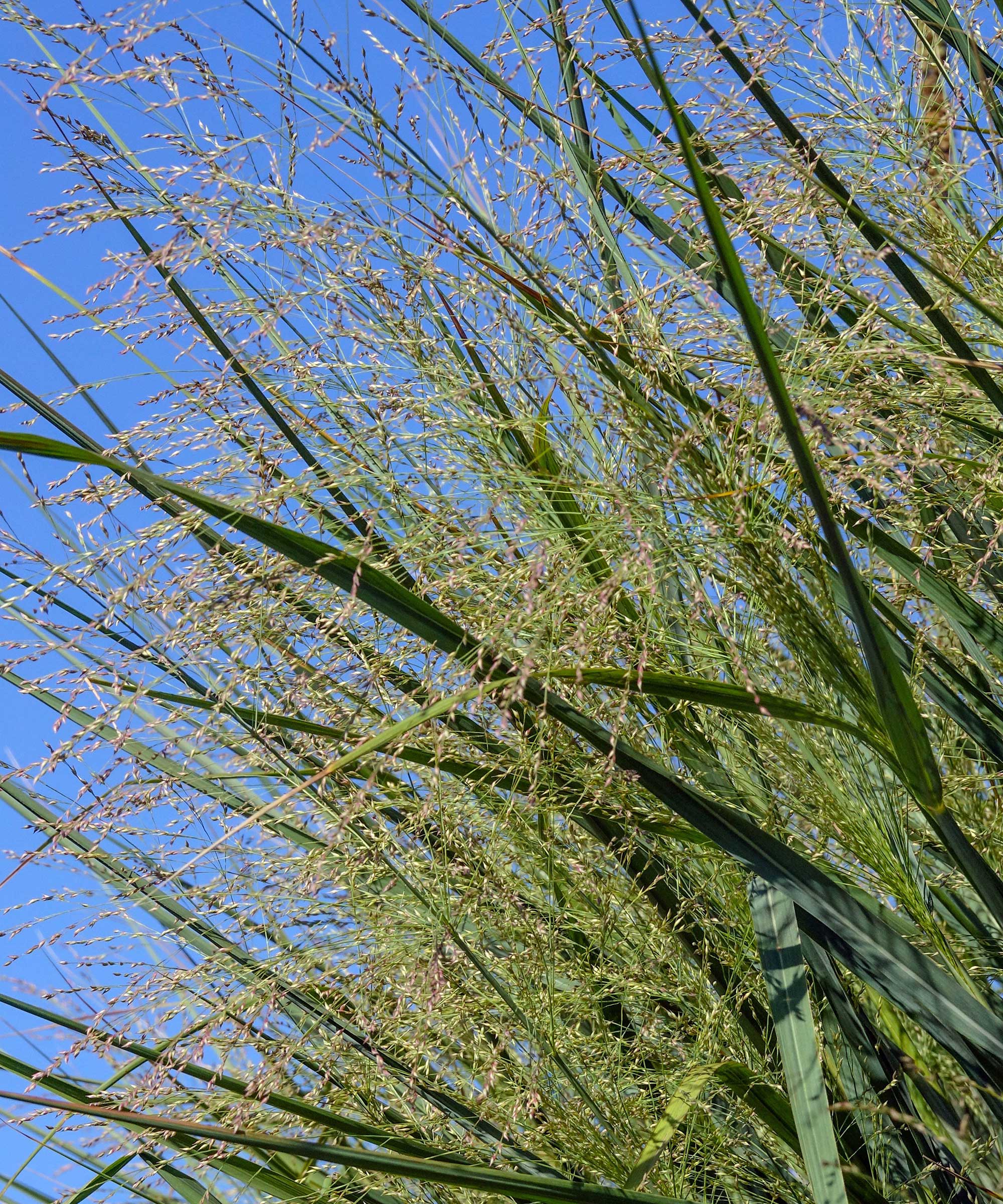
- Height: 6ft (1.8m)
- Hardiness: USDA 7-10 (UK H5)
- Where to plant: Full sun or part shade
Otherwise known as switch grass, this is an amazingly tall type of ornamental grass that forms an upright mound. It is arguably at its very best in the fall, when its bluish-green leaves turn golden.
Airy heads of tiny reddish-brown flowers appear in late summer – and these last well into the winter. It makes a good choice for the cutting garden, too, for large, ethereal arrangements.
Should my taller perennials be supported or staked?
Tall perennials, by their very nature, have evolved to be sturdy, upright plants, and are generally able to cope with what you might call ‘normal’ wind and rain. However, with buildings causing wind tunnels, and storms with strong winds and heavy rainfall becoming more frequent, it can be sensible to stake your more vulnerable plants.
In particular, those plants with large flowers are most at risk. Ornamental grasses and echiums do not need staking.
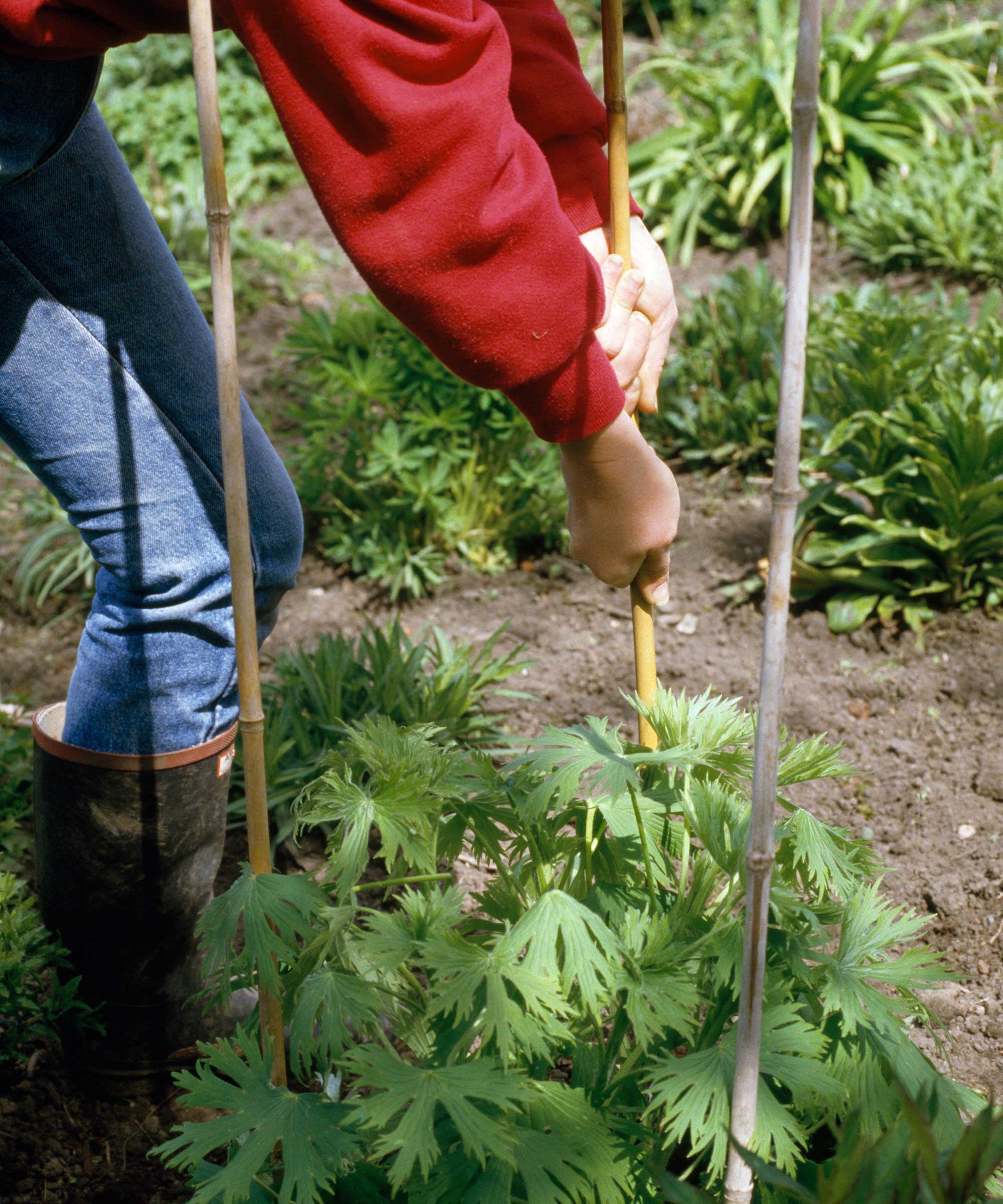
When is the best time to stake tall perennials?
Always put plant supports in place in spring, before tall flowers have put on too much growth. The plants will then grow through the support and hide it from view. Later staking is difficult, as plant growth is more advanced and can easily be damaged.
Don’t tie your plants in too tight – leave enough room for them to grow. As the plant gets taller, it may be necessary to continue tying in the stems, or raise the level of the used supports.
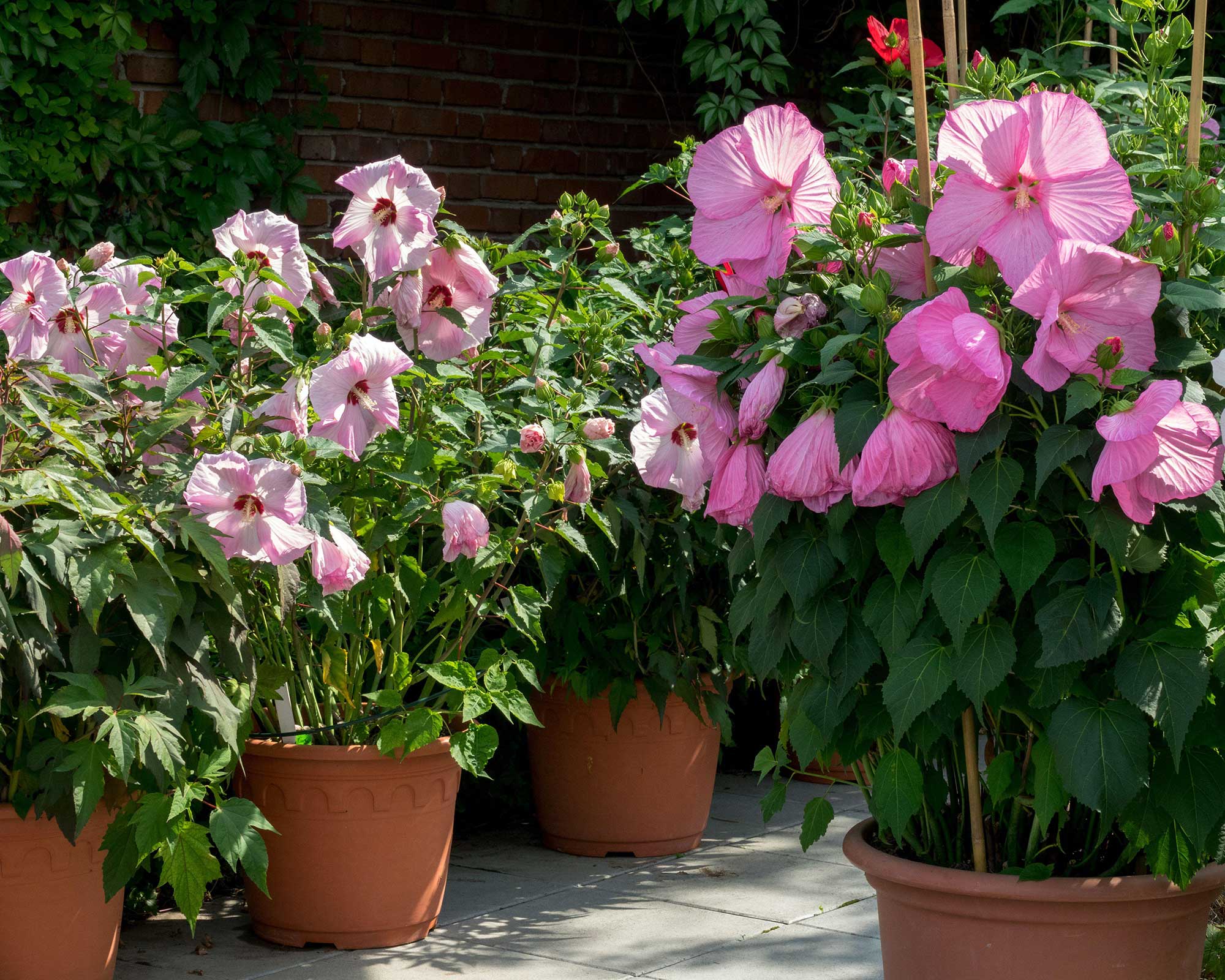
What should I do if a stem snaps on my tall flowers?
Sometimes, emergency staking is necessary when branched stems or flower spikes have been badly bent. Snapped stems should be cut off cleanly; often they can be brought indoors for the vase. Depending on when this happens in the season, regrowth may follow.
Although it is too late to save a snapped stem, this is your sign to review the general supporting requirements in the border. Install makeshift supports as necessary, and without delay. This will stop plants from flopping over and smothering their neighbors, and should minimize further damage.

Graham Clarke is an award-winning writer, who was born into gardening – literally: his father was in charge of Regent’s Park in London, and the family lived in the world-famous Queen Mary Rose Garden. Graham studied with the Royal Horticultural Society at Wisley, and after graduating went to work in the garden at Buckingham Palace. In the past 45 years, Graham has written 20 books, and thousands of articles for many of the UK's best-known gardening magazines, newspapers and periodicals. He was editor of Amateur Gardening (the UK’s oldest weekly magazine for amateurs) for 11 years.
